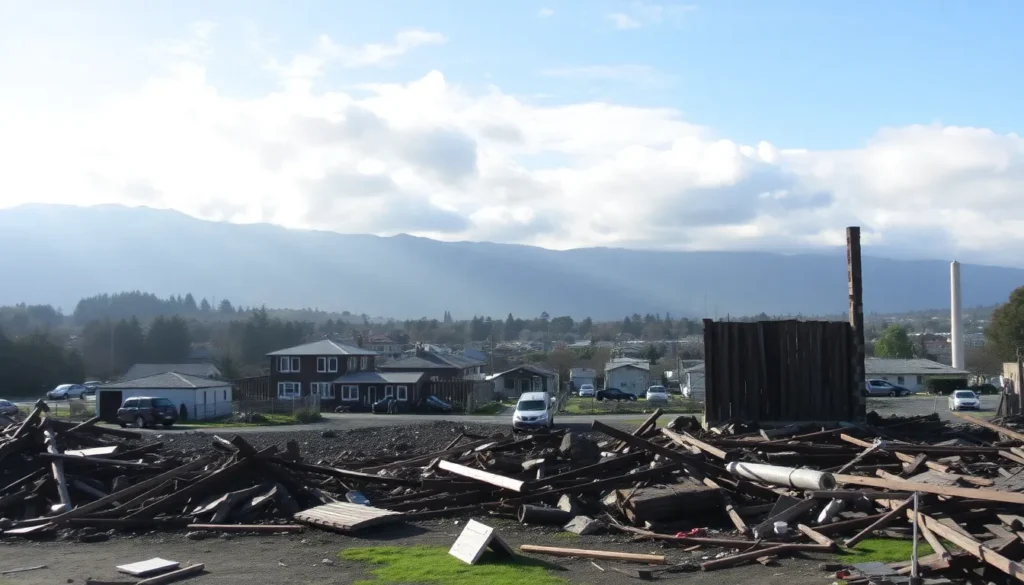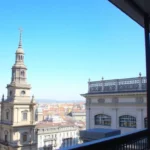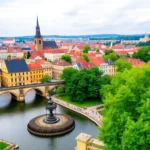Christchurch: A City in Ruins

Imagine a typical Tuesday afternoon in a bustling city. The clock strikes 12:51 PM. Some are enjoying their lunch, others are engrossed in work, while many stroll through the streets, blissfully unaware. Suddenly, an unexpected disturbance shatters the calm.
The ground beneath us, which usually provides a sense of safety and stability, begins to tremble violently.
This isn't just an ordinary shake; it's a furious, relentless quake. Furniture rattles, items topple from tables, and the trees, buildings, and billboards sway ominously. Fear grips you like never before, as your feet, accustomed to solid ground, now feel the unsettling sensation of instability. You lock eyes with a passerby—whether they are a stranger, a friend, or merely a reflection of your own panic is irrelevant. In that moment, you share an unspoken understanding of vulnerability.
The shaking lasts a minute, perhaps less, yet it stretches into what feels like an eternity. Gradually, the earth calms, leaving a haunting stillness in its wake. Inside, a transformation has occurred; you will never be the same.
The Christchurch earthquake on February 22, 2011, claimed the lives of 166 individuals. With a magnitude of 6.3, it marked a pivotal moment in the history of this city and its residents. Four years on, the scars remain fresh, and a walk through the city center reveals a landscape of desolation. The heart of this tragedy lies in its once-majestic cathedral, now reduced to a pile of rubble.
Curiously, if you search for information about the Christchurch earthquake online, the narrative often highlights the resilience of New Zealanders in the face of disaster, portraying them as phoenixes rising from the ashes. However, walking through Christchurch, one encounters a different reality—a ghost town. Numerous areas still remain fenced off, with abandoned buildings and ongoing destruction evident everywhere.
Employment opportunities in the construction sector are abundant in Christchurch, with many individuals recounting tales of a remarkably laid-back work pace. Some employers even suggest taking it easy, as the government offers generous compensation for recovery efforts, creating an unsettling undertone that profits can be made from such devastation.
While it might seem morbid, there are even tours available that guide tourists through the ruins, showcasing the areas most impacted by the 2011 earthquake. Naturally, this experience comes at a cost of approximately $75. It feels peculiar and profoundly sad.
One noteworthy initiative is the RE:START MALL, a vibrant shopping hub created from over 50 shipping containers, offering shops, cafes, and street food. This endeavor symbolizes resilience and renewal amid the destruction.
We spent a delightful afternoon with Judith and Aitor from Less is More, who brought a splash of color and vitality to a city that, regrettably, feels trapped in time.
Understanding the Impact of the Earthquake on Christchurch
The catastrophic event of February 2011 was more than just a physical upheaval; it profoundly changed the social and emotional fabric of the city. Families lost loved ones, and many residents were left grappling with trauma. The psychological scars, though less visible than physical damage, run deep.
Many survivors report feelings of anxiety and uncertainty, even years later. The fear of aftershocks, though diminished, lingers in the minds of those affected. This psychological impact is a testament to the long-lasting effects of such natural disasters, reminding us that recovery is not just about rebuilding structures but also healing hearts and minds.
Rebuilding Efforts: A City in Transition
The reconstruction of Christchurch has been a monumental task. Efforts have been undertaken to restore the city's infrastructure, but progress has been slow and complicated. The balance between preserving historical sites and accommodating modern development poses challenges for city planners.
Many iconic buildings, such as the Christchurch Cathedral, are still in limbo, their futures uncertain. The community's outcry for restoration is palpable, as these structures hold not just architectural value, but emotional significance as well.
Community Resilience and Spirit
Amid the debris, the spirit of the Christchurch community has shone through. Local initiatives and grassroots movements have sprung up, facilitating support networks for those affected by the disaster.
Examples include:
- Community workshops aimed at psychological healing.
- Local businesses banding together to revitalize the economy.
- Volunteer-driven clean-up efforts that foster camaraderie.
These initiatives highlight the determination and resilience of the people of Christchurch, who continue to support each other in the face of ongoing challenges.
A Glimpse into the Future: What Lies Ahead for Christchurch?
As Christchurch continues to rebuild, the city faces both opportunities and challenges. The integration of innovative urban designs and sustainable practices could set a new precedent for future developments.
Efforts are being made to create green spaces, pedestrian-friendly areas, and resilient infrastructure that can withstand future natural disasters. This forward-thinking approach could serve as a model for other cities around the globe facing similar vulnerabilities.
Exploring Christchurch Today
For those visiting the city, it’s essential to appreciate both the beauty and the pain that coexist. From the vibrant street art that adorns the walls to the quiet memorials honoring those lost, every corner tells a story.
Here are some must-visit spots that reflect the city's journey:
- The Cardboard Cathedral, a symbol of hope and innovation.
- The Quake City exhibition, which offers insights into the earthquake's impact.
- The Botanic Gardens, a serene escape amidst the urban landscape.
Visiting these sites allows travelers to connect with the city's history while witnessing its efforts to rise anew.
As the narrative of Christchurch unfolds, it is a powerful reminder of the resilience of human spirit in the face of adversity. The journey of rebuilding continues, and with it, the hope for a brighter future. For a visual glimpse of Christchurch’s transformation and the efforts to rebuild, check out this insightful video:





Deja una respuesta